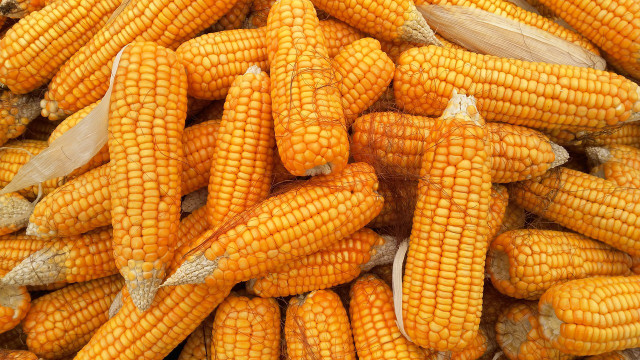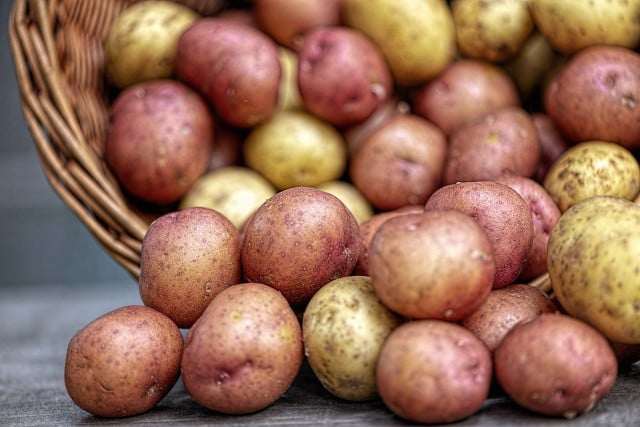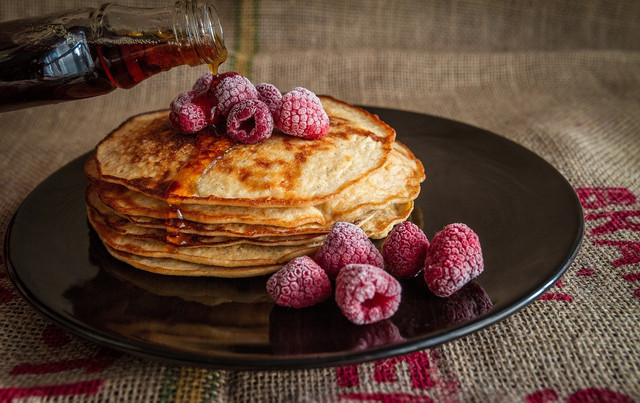Don't have arrowroot on hand and need something gluten-free to thicken your sauce? Don't sweat it! You're bound to have one of these arrowroot powder substitutes in your pantry.
Arrowroot powder is a white, starchy flour derived from the root and the rhizome of the arrowroot plant, which can refer to several species of plant belonging to the genus Marantae. Arrowroot is native to Guyana and western Brazil, and today is cultivated throughout the Caribbean islands, South Africa, Southeast Asia, and Australia.
Particularly popular for its gluten-free composition, arrowroot powder is a classic thickening agent, but it’s not the only way to get the job done! We’ll share our favorite arrowroot powder substitutes to help you get perfect results without having to run out to the store.
Arrowroot Powder Substitute #1: Cornstarch

(Foto: CC0 / Pixabay / mute_gemini)
A typical household staple, cornstarch is a white powder derived from the endosperm (the inner fleshy part) of corn kernels. As corn is naturally gluten-free, so is this starchy powder. Cornstarch can be used in a 1:1 ratio when substituted for arrowroot powder. Since this powder dissolves when it’s heated, it’s best to use it when making things like sauces and gravies.
As environmental awareness grows, corn production in the United States is becoming more and more sustainable. When buying your cornstarch, choose organic and non-GMO whenever possible (available on Amazon**).
#2: Tapioca Starch



(Foto: CC0 / Pixabay / Nikin)
Tapioca starch is another perfect gluten-free alternative to arrowroot powder. Extracted from the tapioca plant, tapioca starch is useful not only as a thickening agent but also as a substitute for wheat flour for gluten-free baking. In both instances, use a 1:1 ratio. Organic and non-GMO tapioca starch is available in most health food markets, as well as on Amazon**.
When mixed with liquid, tapioca starch takes on a gel-like substance. This, plus the fact that acids won’t affect its thickening properties (unlike cornstarch or wheat flour), makes it especially well-suited for fruit pie fillings. The only case in which tapioca starch does not stand up well is in cold temperatures, so if you’re making a frozen dessert, you’ll want to choose a different alternative from this list.
Want to try out something different? Try using tapioca starch (which is also sometimes labeled as tapioca flour) to make black tapioca pearls for bubble tea.
#3: Potato Starch



(Foto: CC0 / Pixabay / stanbalik)
Made from good old familiar potatoes, potato starch is a gluten-free thickening agent that can be substituted 1:1 for arrowroot powder in any recipe. Because potato starch has a bit of its own flavor, it’s best to use it when cooking savory dishes like vegetarian gravy, scafata, or asparagus soup.
If you can’t find organic and non-GMO potato starch in your local supermarket, you can always find it on Amazon**l.
Arrowroot Powder Substitute #4: Psyllium Husk



(Foto: CC0 / Pixabay / ponce_photography)
Psyllium husk is a tasteless, soluble fiber derived from the psyllium plant, a shrub-like herb that grows worldwide but is especially common in India. In addition to being used as a thickener in cooking, psyllium husk is also used in gluten-free baking to add fiber to breads and cookies and is even sold as a dietary supplement to help manage healthy weight loss and control blood sugar levels.
When replacing arrowroot with psyllium husk powder, use half the amount of psyllium husk powder. When choosing your products, always remember to go organic and non-GMO whenever possible – if you can’t find it in stores, try looking on Amazon**!
#5: Coconut Flour



(Foto: CC0 / Pixabay / piviso)
If your kitchen is gluten-free, you’re likely to have coconut flour tucked away somewhere in your pantry. Made from ground coconut flesh, coconut flour is highly absorbent and will help you reach your desired consistency in no time. Replace arrowroot powder with half the amount of coconut flour.
Coconut flour is also great for making gluten-free cakes, cookies, breads and even (vegan) pancakes. This type of flour also happens to be a particularly sustainable ingredient, as it is a by-product of coconut milk production. Don’t forget to look for organic in stores or on Amazon**!
#6: Xantham Gum



(Foto: CC0 / Pixabay / 089photoshootings)
A perhaps less familiar ingredient, xantham gum is produced when the bacteria Xanthomonas campestris is fed with sugars derived from corn, soy, or wheat. Xantham gum can replace arrowroot powder in a 1:1 ratio and is great for things like puddings, cakes, soups, and sauces. However, xantham gum is not suitable for uncooked recipes.
Although its name may give the impression that this is an unnatural product, xantham gum is considered very eco-friendly, as it is made with a very small carbon footprint (since bacteria don’t produce emissions), it is made under precisely controlled conditions, and it can be used to replace synthetic stabilizers and emulsifiers pharmaceutical and cosmetic products.
Xantham gum is vegan, gluten-free, and non-GMO. You can find it in the baking aisle at your local grocery store, or Amazon**.
Read more:
- Gluten-Free, Yeast-Free Bread: A Life-Changing Recipe
- Vegan Lemon Bars: A Simple Gluten-Free Recipe
- 8 Best Rice Flour Substitutes for Baking, Frying, Sauces
Do you like this post?








